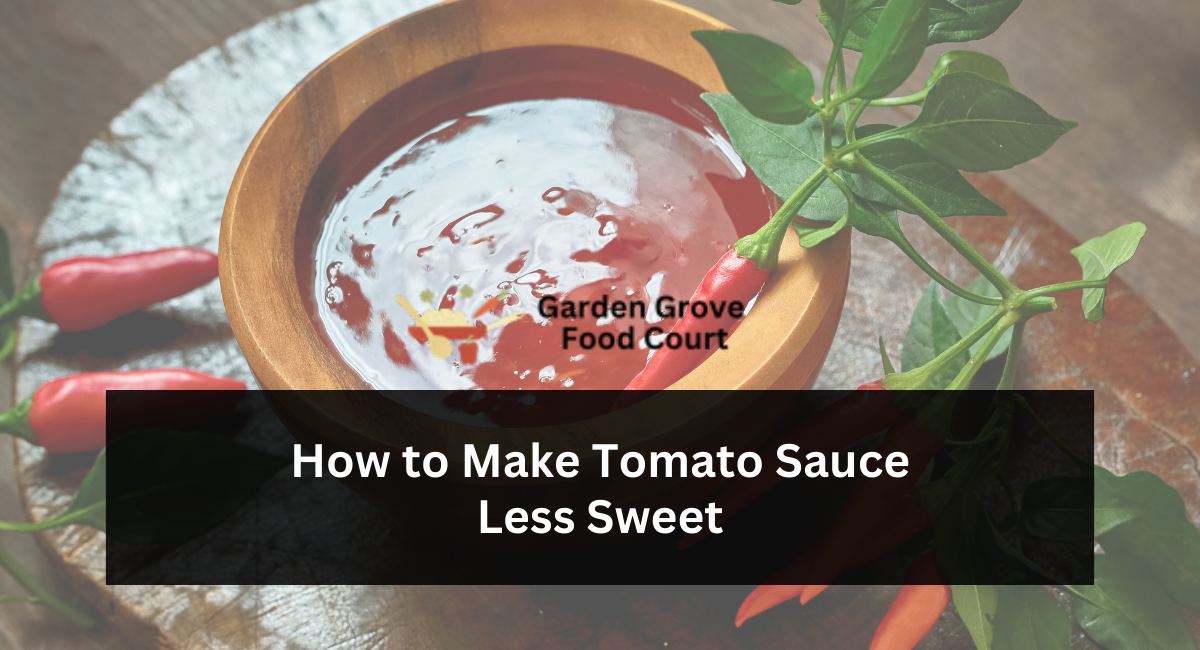One of the most unsatisfying experiences is preparing a dinner and it not turning out as expected. When you have a long day at work, the last thing you want to do is start supper over or wait for a meal delivery when your first effort didn’t taste the way you wanted.
This is especially true with spaghetti sauce. Perhaps you tried to create it on your own, but it didn’t turn out as you had hoped. It might have ended up being overly sweet, overpowering the other flavors.
The tomato sauce you bought from the shop may have contained more sugar than you expected, and it doesn’t suit your preferences. Therefore, consider finding a better-quality tomato sauce. What it requires is some additional flavor and tang from foods with ample salt and acidity.
If your tomato sauce turns up excessively sweet, there is still hope. There are several simple ways to adjust the seasoning or modify the flavor profile so that you may save both time and food. One of the fastest and simplest ways to achieve this is by adding anything acidic to the pot.
How do you adjust the flavor of sweet tomato sauce using acidity?
There are a number of acids that may be used to correct overly sweet tomato sauce, and you certainly have at least one of them on hand. Lemons or lemon juice are typically present in most refrigerators. In addition to concealing the sweetness in your sauce, they contribute a delightful and lively fruit taste that immediately enhances numerous foods.
Red wine vinegar is also a wonderful option, although Rachael Ray includes balsamic in her cherry tomato sauce. Robust Kitchen proposes an unexpected vinegary ingredient: mustard. Since mustard is acidic, it can reduce the sweetness. In addition, it can enhance the flavor of the sauce, which improves the taste while also decreasing the sweetness in various ways.
If you want to slightly increase the natural acidity of the tomatoes without too much interference, consider using cream of tartar. The scentless powder is a result of the winemaking process and will assist in enhancing those sharp flavors.
When adding acidic components to your sauce, be sure to add only a bit at a time and taste as you go. You have the option to include additional content if necessary, although it is rather simple to overcompensate and make it excessively sharp. Don’t be concerned about the other liquid impacting the texture of the sauce. If it becomes too thin, just let it simmer until part of the water evaporates and it reaches the proper thickness.
Additional methods to unsweeten tomato sauce
If you don’t have anything sour available or are just seeking alternative ways to add diverse tastes to your sauce, there are other techniques for fixing it when it’s overly sweet. One of the most obvious options is to add salt if you don’t mind increasing the sodium content, either with actual salt or with a salty cheese like parmesan or pecorino. Another simple approach to resolve this problem is by thinning down the sauce.
For commercially-made sauce, consider thinning it out with water, broth, canned tomato sauce, or a creamy option such as heavy cream or plant-based milk. However, please note that this procedure will weaken the other flavors in the sauce. For a sauce created at home, this is simpler to accomplish: increase the amount of every component except for the sweet one until you achieve the desired flavor.
Because of the disadvantages of the other ways, adding acid is the fastest and simplest approach to change your tomato sauce. If your homemade sauce doesn’t turn out as you wanted or your store-bought sauce isn’t satisfactory, you may use this technique for an easy solution. It will save you time and frustration and allow you to enjoy your pasta still.
Conclusion:
Balance the flavors of your tomato sauce with our tips to reduce sweetness. Discover simple adjustments and complementary ingredients that transform your sauce into a savory masterpiece, ensuring a perfect harmony of taste for your culinary creations.

